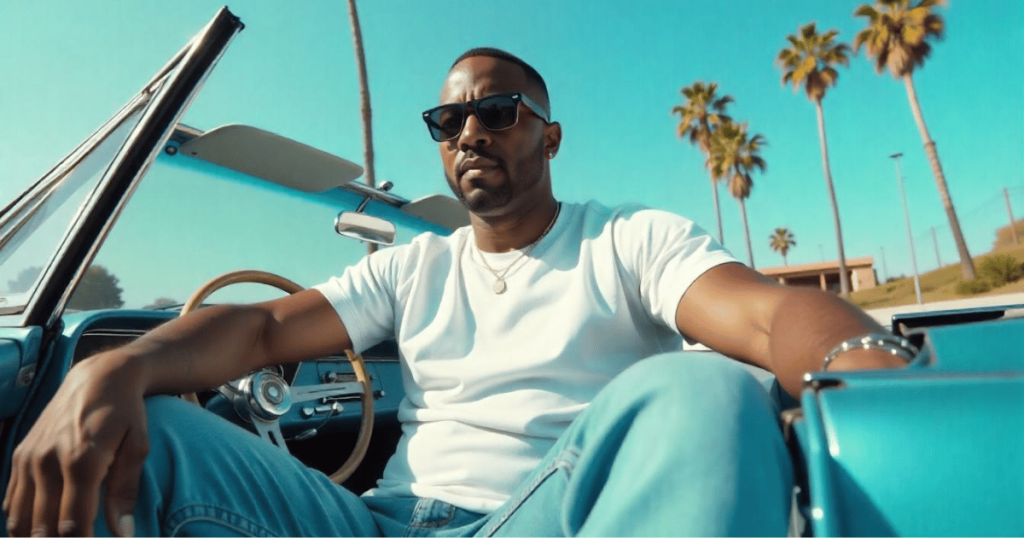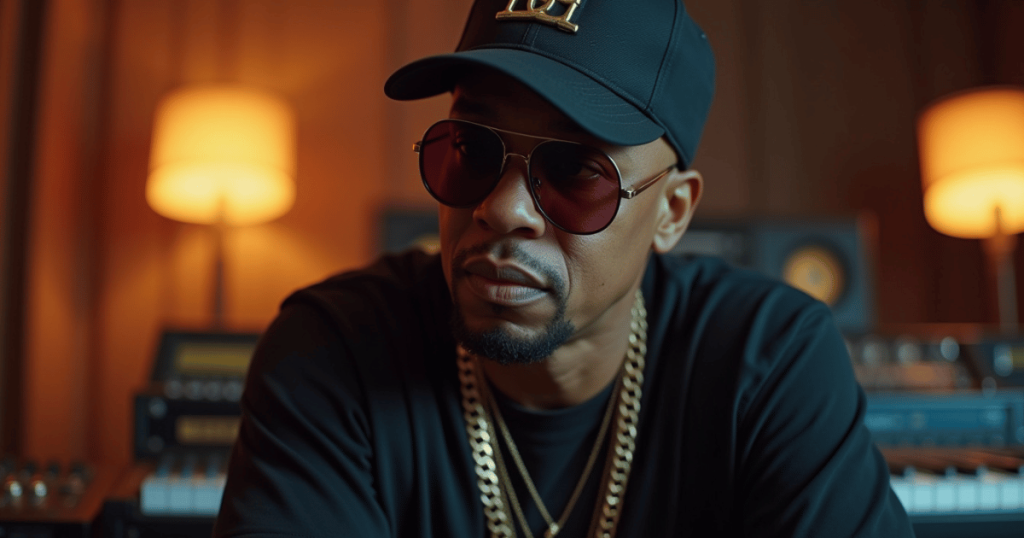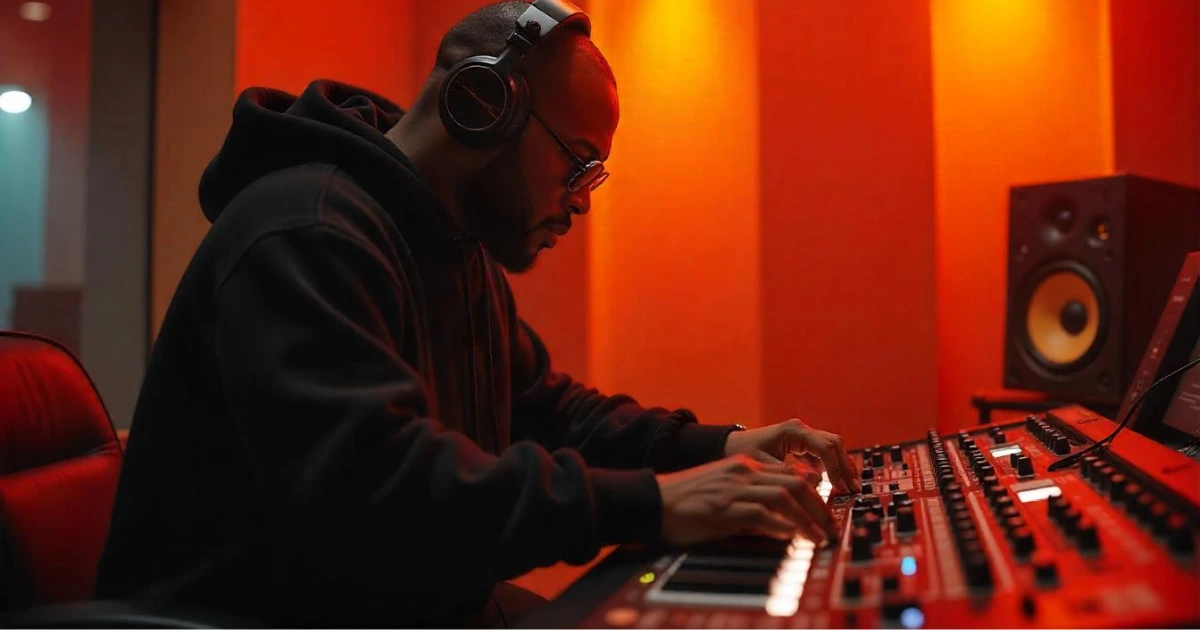Hip-hop has always been a canvas for visionary producers to paint sonic landscapes that define entire eras. Among these trailblazers, few have left a more indelible mark on the genre’s production aesthetics than Dr. Dre. From his early work with N.W.A to the G-Funk dominance of the ’90s and his groundbreaking collaborations that extend into the present day, Dr. Dre has singlehandedly shaped the sound of West Coast hip-hop—and by extension, global hip-hop culture. For a broader view of the music landscape and creative inspiration, visit our Music page.
In the world of beat-making, “Dr. Dre type beat” has become a coveted search term, reflecting a legion of aspiring producers seeking to emulate the iconic blend of funk, soul, and hard-hitting drums that the good Doctor perfected. Yet the Dr. Dre sound is far more than just a lazy replication of the past. It’s a philosophy of meticulous curation, relentless pursuit of quality, and an unparalleled ear for samples that resonate across generations.

We explore the history, influence, and artistry behind Dr. Dre type beat instrumentals and samples. We’ll dissect the foundational elements of his production style, delve into the role of technology and sampling in crafting his signature vibe, and examine how today’s producers adapt Dre’s sonic blueprint to modern tastes. Whether you’re a budding producer, a seasoned artist, or simply a hip-hop aficionado, this deep dive will reveal why Dr. Dre’s legacy endures—and how you can capture a bit of that magic in your own tracks.
1. Origins of the Dr. Dre Sound
Dr. Dre, born Andre Romelle Young, came of age in Compton, California—a place where hip-hop culture brewed in response to social tensions, gang violence, and an urgent need for self-expression. By the time Dre entered the scene, hip-hop was already a nationwide phenomenon, but the West Coast had yet to carve its distinct identity in the mainstream.
The World Class Wreckin’ Cru and Early Experimentation
Long before N.W.A, Dre was part of a collective called the World Class Wreckin’ Cru, where he wore sequined outfits and spun electro-funk records. In those formative years, he learned the importance of danceable grooves and crisp drum programming. This era may seem a far cry from the gritty street tales of N.W.A, but it was here that Dre first displayed a knack for blending funk-inspired basslines with electronic percussion—elements that would reappear later in his production career.
N.W.A: Redefining Gangsta Rap
Dre’s tenure with N.W.A. proved to be a transformative moment, not just for him but for hip-hop at large. Albums like Straight Outta Compton (1988) featured raw, aggressive beats that spotlighted Dre’s growing command over sampling, drum programming, and a flair for cinematic tension. Tracks like “Gangsta Gangsta” and “Express Yourself” signaled a new era of West Coast rap—unapologetically raw, politically charged, and dripping with attitude.

During this period, Dr. Dre honed his ability to combine funk loops, James Brown breaks, and stark drum patterns. The emphasis was on intensity and realism, yet the grooves were undeniably infectious. These productions would later serve as the blueprint for G-Funk, which would dominate hip-hop’s sound in the early to mid-’90s.
2. Key Characteristics of Dr. Dre Type Beats
To understand the essence of a Dr. Dre type beat, we need to deconstruct its foundational elements. Although Dre’s style has evolved through multiple decades, certain signature traits remain consistent. For an even deeper dive into the art of crafting hip hop background music or writing impactful rap verses, check out our comprehensive Rap Beats Ultimate Guide.
2.1 Funk-Driven Basslines
At the core of any Dr. Dre type instrumental lies a funk-driven bassline that holds the entire composition together. These basslines aren’t just an afterthought; they’re the main event. Dre often used live bass or carefully sampled bass notes, giving the track a warm, analog vibe that modern producers still chase.
2.2 Crisp, Hard-Hitting Drums
Dr. Dre is renowned for his meticulous approach to drum sounds. He often layers multiple drum samples to create a distinct punch, ensuring that the kick and snare stand out without overshadowing the rest of the arrangement. Whether it’s the classic Roland TR-808 or more organic, live-sounding drums, Dre’s drum programming is tight, precise, and leaves room for the artist’s vocals to breathe.
2.3 Melodic Synths and Keys
While the early G-Funk era heavily leaned on whiny synth leads (think of Warren G’s “Regulate” or Dre’s own “Nuthin’ but a ‘G’ Thang”), Dr. Dre has since diversified his sound palette. Piano chords, rhodes keys, and lush synth pads frequently appear in his productions, offering a cinematic touch that evokes the grandeur of old-school soul and funk records.
2.4 Layered Samples and Live Instrumentation
A Dr. Dre beat often features a rich tapestry of layered samples—vocal snippets, orchestral stabs, horn sections—mixed seamlessly with live instrumentation. The result is a polished yet soulful sound that’s both classic and contemporary. Even when Dre began incorporating more live musicians into his studio sessions, the underlying sample-based ethos remained intact.
2.5 Minimalistic yet Cinematic Arrangements
Despite the intricacies of layering, Dr. Dre’s arrangements typically maintain a sense of space and clarity. Each element—drums, bass, synth, vocal sample—has a clear role. This approach lends itself to cinematic tension, giving tracks the aura of a widescreen epic, but never at the expense of the central groove.
3. The Role of Samples in Crafting Dre’s Signature
Sampling has always been the lifeblood of hip-hop production, and Dr. Dre is a master at weaving old-school funk, soul, and even rock elements into new compositions. His sample choices are often rooted in the funk era—artists like George Clinton, Parliament-Funkadelic, James Brown, and Curtis Mayfield. By isolating choice riffs or drum breaks, Dre infuses a nostalgic warmth into his tracks.
3.1 Sample Selection: Quality over Quantity
Unlike producers who inundate their beats with endless samples, Dre opts for fewer but higher-quality choices. A single funk guitar riff or a horn stab might serve as the track’s primary hook, embellished by a carefully curated selection of additional samples. This approach ensures that each sample stands out, rather than getting lost in a cluttered mix.
3.2 Sample Manipulation and Processing
Part of what gives Dre’s beats their unique character is the manipulation of samples through EQ, pitch-shifting, time-stretching, and layering. He might take a snippet from a classic ’70s funk record, pitch it down to match his track’s vibe, then layer it with subtle synths to create a fresh texture. These techniques allow for a seamless blend of the old and new, a hallmark of the Dr. Dre sound.

3.3 Influence of Digging Culture
Dre’s sample library is vast, a result of years spent digging through record stores, estate sales, and private collections. While the digital age makes it easier for today’s producers to find and manipulate samples, the spirit of discovery and curation remains crucial. Producers aiming for a Dr. Dre type beat often dive into the same well of classic funk and soul records, seeking those magic moments that can spark a timeless groove.
4. G-Funk and Beyond: Evolution of Dr. Dre’s Production
When Dr. Dre launched The Chronic in 1992, he introduced the world to G-Funk—a subgenre that would define the sound of West Coast rap for much of the decade. But Dre didn’t stop there. Over the years, he has continually reinvented his style, pushing the boundaries of hip-hop production. To explore how these sounds evolved into today’s modern trap and beyond, read our detailed article on What is Trap Music: From Atlanta Streets to Global Phenomenon.
4.1 The Chronic Era: Birth of G-Funk
The Chronic was a revelation. Characterized by slow, rolling basslines, squealing synth leads, and a laid-back yet potent groove, G-Funk represented a stark departure from the breakbeat-heavy East Coast style. Tracks like “Nuthin’ but a ‘G’ Thang” and “Let Me Ride” showcased Dre’s uncanny ability to transform P-Funk samples into hypnotic rap anthems.
4.2 Aftermath and the Mid-’90s Shift
Following the success of The Chronic and his work with Snoop Dogg (Doggystyle), Dre left Death Row Records to form Aftermath Entertainment in 1996. This period saw him experimenting with a broader range of sounds. Albums like Dr. Dre Presents the Aftermath featured more R&B influences and collaborations with artists outside the traditional West Coast rap sphere.
4.3 2001 and the Return to Form
By the late ’90s, many wondered if Dre could still define the hip-hop zeitgeist. His 1999 album 2001 put those doubts to rest. The project was both a tribute to and evolution of G-Funk, blending live instrumentation, digital production techniques, and collaborations with artists like Eminem, Xzibit, and Snoop Dogg. Tracks like “Still D.R.E.” and “The Next Episode” became instant classics, reaffirming Dre’s status as a sonic architect. Refer to Mixdown Magazine’s Gear Rundown on Dr. Dre for insights into the equipment and techniques he employs in his productions.
4.4 The 2010s and Compton
Though Dre’s studio album output slowed in the 2000s, his influence never waned. In 2015, he released Compton: A Soundtrack, inspired by the N.W.A biopic Straight Outta Compton. This album highlighted a more contemporary production style—heavier bass, modern trap-inspired elements, and collaborations with newer artists—yet still carried Dre’s trademark polish and attention to detail.
5. Impact on West Coast Hip-Hop and the Global Scene
Dr. Dre’s production style has had a ripple effect that extends far beyond the West Coast. His approach to sampling, drum programming, and melodic funk has become a staple in hip-hop production worldwide.
5.1 West Coast Renaissance
Thanks to Dr. Dre, the West Coast carved out a sound that was distinctly its own. Artists like Warren G, DJ Quik, and Battlecat followed in Dre’s footsteps, creating a regional identity that revolved around funk-infused beats and laid-back storytelling. Even today, emerging West Coast artists nod to Dre’s influence, blending classic G-Funk elements with modern rap sensibilities.
5.2 Mainstream Pop Collaborations
Dr. Dre’s influence transcends hip-hop. He has produced tracks for pop icons like Gwen Stefani and Mary J. Blige, introducing the grit and warmth of his beats to a broader audience. This crossover appeal cemented Dre’s position as a universal tastemaker—someone whose sonic signature could elevate artists across genres.

5.3 Global Spread of the Funk Aesthetic
From Europe to Asia, hip-hop producers revere Dr. Dre’s knack for blending classic funk with contemporary rap. The idea of a “Dr. Dre type beat” is so widespread that it has become shorthand for describing a certain level of quality, groove, and polish. Whether you’re in Berlin or Tokyo, if someone says they want a beat “like Dre,” you know they’re seeking that timeless fusion of soul and swagger. These beats can also be found on music platforms like SoundCloud, making them accessible to producers and fans worldwide.
6. Modern Technology Meets Classic Aesthetics
One of the reasons Dr. Dre’s production style remains relevant is his willingness to embrace new technology without sacrificing the core elements that define his sound.
6.1 Digital Audio Workstations (DAWs)
Dre started in an era of analog mixers and hardware samplers. However, modern producers have a host of DAWs—such as Pro Tools, Logic Pro, FL Studio, and Ableton Live—that can replicate and expand upon classic production techniques. While Dr. Dre reportedly still loves hardware like the Akai MPC series, today’s beat makers can achieve a similar punch with carefully selected software plugins and digital sample libraries.
6.2 Virtual Instruments and Plugins
The soulful strings, vintage keys, and brass sections found in Dre’s beats can now be emulated through high-quality VSTs (Virtual Studio Technology plugins). By layering these virtual instruments with carefully chosen drum samples, producers can craft that signature Dre-like fullness, even if they’re working from a laptop in a bedroom studio.
6.3 Modern Mixing and Mastering
Dre’s sonic perfectionism is legendary, and modern producers can approach this level of clarity and punch using advanced mixing and mastering tools. From multiband compression to specialized EQ plugins that replicate the warmth of analog hardware, the digital era provides endless ways to sculpt sound. That said, the real magic lies in the ear of the producer. A plugin can’t replicate taste, which Dre has in abundance.
7. How to Create a Dr. Dre Type Beat
Aspiring producers often dream of crafting a beat that exudes the timeless quality of a Dr. Dre production. While there’s no one-size-fits-all formula, here’s a roadmap to guide you. The beats typically come with quality WAV files and track outs (stems) upon purchase, allowing for greater customization and professional-level mixing.
7.1 Step 1: Start with the Drums
Begin by selecting crisp, hard-hitting drum samples. Dre’s drums often have a certain knock—a tightly EQ’d kick that cuts through the mix and a snappy snare that hits you in the chest. Layer different samples if needed, but don’t overdo it. Each hit should have purpose.
7.2 Step 2: Find a Funky Bassline
The bassline is the heartbeat of any Dr. Dre-inspired track. Experiment with live bass, bass guitar VSTs, or even classic Moog synth sounds. The key is to keep it melodic yet grounded, leaving space for the other elements to shine.
7.3 Step 3: Incorporate Signature Synths or Keys
Next, introduce a whiny G-Funk lead, a warm electric piano, or some lush strings—whatever suits the mood. If you’re going for classic ’90s Dre, a sawtooth synth lead (similar to a Moog) can work wonders. For a more modern take, blend in atmospheric pads or a subtle piano chord progression.
7.4 Step 4: Add Vocal or Instrumental Samples
Scour your library (or old records) for soulful samples that complement the vibe. It could be a vocal snippet, a horn stab, or a guitar lick. Chop it, pitch it, or filter it until it feels integrated into the groove.
7.5 Step 5: Perfect the Arrangement
Dr. Dre’s arrangements are cinematic, but they’re never cluttered. Use drops, transitions, and variations to keep the listener engaged. Pay attention to how the drums and bass interact with the melody. The goal is to maintain a smooth flow while highlighting each element’s strengths.
7.6 Step 6: Mix and Master with Precision
EQ each track so that no frequency range dominates. Use compression to tighten the drums and sidechain the bass if necessary. A touch of reverb on the synths or samples can add depth, but don’t drench the mix. Finally, master your track to ensure it’s loud and clear without sacrificing dynamics.
8. Best Practices for Sampling and Clearing Rights
Sampling, while central to Dr. Dre’s style, is fraught with legal complexities. If you’re planning to release your Dr. Dre type beat commercially, it’s crucial to navigate the murky waters of sample clearance. The Recording Arts Canada article on samples used by Dr. Dre offers an analysis of his sampling choices and their impact on his sound. Many websites offer Dr. Dre type beats in formats like MP3 and WAV, providing flexibility for producers to work with high-quality audio files.
8.1 Understand Copyright Law
Whenever you use someone else’s recording—even if it’s just a short snippet—you’re dealing with potential copyright infringement. U.S. law doesn’t recognize a “safe” length for sampling, so clearing your samples is the only surefire way to avoid legal trouble.
8.2 Use Sample Clearance Services
Numerous companies specialize in clearing samples for producers. They’ll contact the rights holders, negotiate fees, and ensure you have legal documentation. While this can be costly, it’s essential if you aim to monetize your music or secure a record deal. Purchases of Dr. Dre type beats are usually delivered within 24 hours to the buyer’s email, ensuring a quick and efficient process for artists eager to start creating.
8.3 Consider Royalty-Free Sample Packs
An alternative to clearing samples is using royalty-free loops and sounds from reputable providers. Many sample pack creators take inspiration from Dr. Dre’s style, offering G-Funk loops, soulful keys, and analog drum hits. This route eliminates clearance headaches, though you may lose some of the authenticity that comes from digging through vintage records.

8.4 Transform and Manipulate
If you do decide to sample classic records, heavily manipulate the sample. Pitch-shift, chop, reverse—anything that transforms it into something uniquely yours. While this doesn’t eliminate the need for clearance, it can make negotiations easier if the original is less recognizable.
9. Dr. Dre’s Collaborations: Shaping the Sound of Generations
Dr. Dre’s legacy isn’t just about his solo work. Much of his influence comes from the artists he’s mentored and the collaborations he’s spearheaded. For information on Dr. Dre’s recent work, such as his reunion with Snoop Dogg for the album “Missionary,” refer to the Associated Press article.
9.1 Snoop Dogg and the G-Funk Takeover
When Snoop Dogg emerged on The Chronic, his laid-back drawl and charismatic presence paired perfectly with Dre’s production. Their chemistry solidified G-Funk as a dominant force, culminating in Snoop’s debut album, Doggystyle—a critical and commercial juggernaut.
9.2 Eminem: Crossing Genre Boundaries
Dr. Dre’s discovery of Eminem introduced the world to a fiery Detroit MC whose complex rhyme schemes and controversial persona revitalized hip-hop in the late ’90s. Tracks like “My Name Is” and “The Real Slim Shady” showcased Dre’s ability to adapt his production style to fit a more aggressive, comedic, and lyrically dense approach.
9.3 50 Cent and the Gangsta Pop Hybrid
In the early 2000s, Dr. Dre, alongside Eminem, introduced 50 Cent to the mainstream. Get Rich or Die Tryin’ combined street grit with pop sensibilities, leading to smash hits like “In da Club.” This partnership underscored Dre’s knack for balancing radio appeal with authentic rap credentials.
9.4 Kendrick Lamar and the New West
While not solely produced by Dr. Dre, Kendrick Lamar’s ascent under the Aftermath umbrella demonstrates Dre’s continued relevance. His mentorship helped guide Kendrick’s artistic vision, bridging the gap between old-school West Coast traditions and modern experimental hip-hop.
10. Case Studies: Iconic Tracks and Their Influence
10.1 “Nuthin’ but a ‘G’ Thang” (1992)
Often cited as one of the greatest hip-hop songs of all time, “Nuthin’ but a ‘G’ Thang” encapsulates everything that made G-Funk special: a smooth, laid-back groove, melodic synth lines, and a relentless sense of cool. This track paved the way for a more relaxed yet undeniably funky style of rap production.
10.2 “Still D.R.E.” (1999)
Co-written by Jay-Z and anchored by a piano loop that instantly lodges in your brain, “Still D.R.E.” signified Dr. Dre’s triumphant return. The track’s minimalist arrangement and relentless forward momentum highlight Dre’s mastery of tension and release.
10.3 “The Next Episode” (1999)
Another standout from 2001, “The Next Episode” brought together Dre, Snoop Dogg, and Nate Dogg for a high-octane ride through classic G-Funk territory. Its haunting string stabs and whistling synth lead became the soundtrack to countless parties, reinforcing Dre’s reputation for crafting timeless anthems.
10.4 “In da Club” (2003)
Though primarily credited to producer DJ Quik for the drums, Dr. Dre’s involvement in shaping 50 Cent’s breakout single can’t be overstated. The polished mix, heavy yet crisp drums, and catchy melodic hook turned “In da Club” into an era-defining hit that still resonates in clubs worldwide.
11. The Future of Dr. Dre Type Beats
As hip-hop continues to evolve, Dr. Dre’s influence remains deeply embedded in its DNA. Modern subgenres like trap, drill, and melodic rap have introduced new rhythms and textures, yet producers still reference Dre’s techniques when they want a timeless, authentic West Coast feel.

11.1 Hybridization of Genres
The blending of funk, soul, and modern electronic elements is likely to continue, as producers draw on Dr. Dre’s blueprint while incorporating cutting-edge sounds. We may see a resurgence of live instrumentation in hip-hop, a trend Dre has championed for decades.
11.2 AI and Beat-Making
The rise of AI-driven tools could enable producers to mimic Dr. Dre’s style at the click of a button, analyzing his chord progressions, sample choices, and drum patterns to generate “Dre-like” instrumentals. While this technology holds promise for aspiring creators, it also raises questions about authenticity and the human touch that makes Dr. Dre’s work so revered.
11.3 Global Collaborations
As hip-hop continues to expand globally, Dr. Dre type beats could serve as a cultural bridge. Producers from Africa, Asia, and Europe may infuse their local musical traditions with Dre’s G-Funk sensibilities, creating cross-cultural fusions that keep the sound fresh and relevant. Additionally, these beats can be purchased for exclusive rights at various online music stores, allowing artists to secure unique tracks for their projects.
12. Frequently Asked Questions
Q1: What defines a Dr. Dre type beat?
A Dr. Dre type beat typically features a funk-driven bassline, crisp drums, soulful or cinematic samples, and a polished arrangement. The key is a balance between vintage funk and modern production techniques.
Q2: Do I need expensive equipment to make Dr. Dre type beats?
Not necessarily. While Dre himself has access to state-of-the-art studios, modern producers can recreate much of his style using affordable DAWs, high-quality plugins, and well-chosen sample packs. The key is attention to detail and a good ear for mixing. For those looking to purchase Dr. Dre type beats, the cost can vary, with some priced around $30.00, making them accessible to a wide range of creators.
Q3: How important are samples in achieving the Dr. Dre sound?
Samples are crucial. Dre’s classic tracks often revolve around a single, carefully chosen sample from funk or soul records. However, he also incorporates live instrumentation, so the best approach is a blend of both worlds.
Q4: What BPM range should I aim for?
Dr. Dre type beats usually sit between 85-100 BPM, though he’s produced slower and faster tracks. The tempo often depends on the desired vibe—laid-back G-Funk or a more energetic club feel.
Q5: Can I release a Dr. Dre type beat commercially?
Yes, but be cautious with samples. If you’re using copyrighted material, you need to clear the rights. Alternatively, opt for royalty-free samples or create original compositions that capture Dre’s vibe without directly sampling. Users can also download Dr. Dre type beats for free at certain websites, though these may come with limitations on commercial use.
13. Conclusion
Dr. Dre stands as a colossus in the hip-hop world, a master producer who fused the raw energy of West Coast street life with the timeless grooves of funk and soul. His influence reverberates through every corner of modern rap, and “Dr. Dre type beats” remain a gold standard for producers seeking a blend of musicality, punch, and polish. To dive deeper into the roots of instrumental hip hop, as well as beat-making techniques, be sure to explore our sections on different styles of instrumentals, Rap Beats, Trap Beats, Hip-Hop Beats, and Freestyle Rap Beats.
From the groundbreaking days of N.W.A to the cultural takeover of G-Funk and beyond, Dre has consistently pushed the envelope—adapting to new trends without sacrificing his core aesthetic. His meticulous attention to detail, unwavering commitment to quality, and keen ear for the perfect sample have cemented him as a legend, not just in hip-hop, but in popular music at large.
For aspiring producers, capturing the essence of Dr. Dre’s style is both an artistic challenge and a creative thrill. It demands respect for the roots of funk and soul, an ear for cinematic flourishes, and a dedication to precision in mixing and mastering. Above all, it requires the kind of passion and authenticity that has defined Dre’s career from the very start.
Whether you’re a fan soaking up the history, a musician looking to emulate Dre’s sound, or simply an observer curious about the mechanics of a legendary production style, the story of Dr. Dre type beats offers a blueprint for understanding what it takes to shape the direction of a genre. It’s a testament to the power of musical vision, relentless work ethic, and the right combination of innovation and tradition.
In a hip-hop landscape that’s constantly reinventing itself, Dr. Dre’s legacy endures—proof that greatness isn’t just about being ahead of the curve, but about having the courage to define it. And as long as producers and fans continue to crave that signature fusion of funk, soul, and West Coast swagger, the good Doctor’s influence will remain a guiding light, illuminating the path for generations of beat-makers to come.
